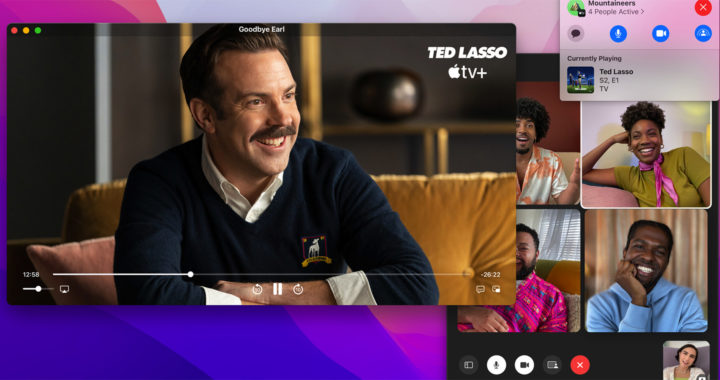FaceTime is one of the mainstays and widely-used native applications found preinstalled in selected Apple devices such as the Macintosh line of personal computers, the iPhone line of smartphones, and the iPad line of portable tablet devices.
Introduced in June 2010 for iOS and later in 2011 for macOS, this proprietary videotelephony app has undergone numerous iterations and updates as part of an attempt to make it a competitive and appealing digital messaging platform.
But what exactly are the advantages of FaceTime when compared to videotelephony platforms such as Zoom Video Communications, Microsoft Teams, and Google Meet? How does it differ from messaging platforms such as Facebook Messenger, Viber, and Telegram?
Pros: The Advantages of FaceTime
1. Capable App For Video Conferencing and Audio Calling
FaceTime can compete against other videotelephony platforms in terms of video and audio quality, as well as the inclusion of usable features. Sessions are almost always free from hiccups. Since iOS 12, it supports group video or audio calls with up to 32 participants.
The arrival of iOS 14 has enabled a picture-in-picture mode for iPhone and iPad, thus allowing users to do other things on their devices while on a call. With the introduction of iOS 15 and macOS Monterey, the features of FaceTime have expanded further.
Similar to other platforms such as Facebook Messenger or Instagram, it supports the use of effects and filters, particularly memoji and animoji on compatible Apple devices. Non-Apple users can also participate in a call using a web client.
2. A Free Application That Comes Preinstalled in Apple Devices
It is also important to note that this app is free and comes pre-installed on macOS, iOS, and iPadOS devices. Note that Apple has a decent library of proprietary applications that are also free and come either pre-installed or available for download.
Competing apps such as Zoom, Microsoft Teams, and Google Meet are also free. However, accessing their full feature will require users to purchase subscription-based plans. Facebook Messenger and Viber are also free but come with ads.
3. Optimized Software to Run Smoothly on Apple Devices
Another notable advantage of FaceTime, especially when compared with other videotelephony and messaging platforms, is that it is developed to run with the operating systems and hardware specifications of Apple devices in mind.
Note that Apple is infamous for its hardware-software optimization. The company ensures that all of its proprietary software or applications are not only compatible but also maximize the potentials of the hardware components of its products.
FaceTime essentially runs smoothly on iPhone and iPad, as well as on macOS computers. Of course, while other platforms relatively run smoothly on these devices, it runs as efficiently as possible because it is optimized for both the operating systems and the hardware.
4. More on the Features and Functionalities on FaceTime on Mac
The arrival of macOS Monterey comes with the introduction of additional functionalities for FaceTime found on iOS 15. The ShareTime feature allows a user to bring streaming videos into their calls, synchronize music or movie playback, and share their screens.
Users of Mac devices starting with Apple M1, Apple M1 Pro, and Apple M1 Max system-on-chips can use Portrait mode to blur their backgrounds and make the overall look and feel of the video feed more aesthetically pleasing while adding an added layer of privacy.
There are also several audio-related features that can improve the overall call experience. Spatial audio creates a sound field that helps conversations flow as easily as they do while Voice Isolation mode uses machine learning to block ambient noise.
Choosing the Wide Spectrum mode brings every sound into a particular call. Some of the use cases of this feature include online music lessons, remote participation in a streamed meeting or conference, and live demonstrations in which audio input is important.
Cons: The Disadvantages of FaceTime
1. Not Really Suited For Work-Related Applications or Productivity
While it can relatively against other popular videotelephony platforms such as Zoom, Microsoft Teams, and Google Meet, one notable disadvantage of FaceTime is that it is not actually developed and designed for use as a productivity app.
Apple has positioned this app primarily as a social messaging platform intended for use to connect with family members or friends. It lacks business-related features and third-party API integrations unlike platforms made for business communication.
For better context, rather than comparing it to Zoom and other business-centric videotelephony platforms, its overall look and feel are somewhat similar to the casual or consumer-grade videotelephony feature of Facebook Messenger, Telegram, and Viber.
2. It Still Remains an Apple-Exclusive Videotelephony Platform
Remember that non-Apple users can participate in an ongoing FaceTime call via a link generated by a particular FaceTime user. The link essentially directs a non-Apple user to a web client similar to the invite-link feature of Zoom and Google Meet.
But the fact remains that a non-Apple user cannot initiate a call. Calls can only be made using the application. It is not available on Android, Windows, or Linux distributions such as Debian or Ubuntu. Hence, exclusivity is another disadvantage of FaceTime.
3. Absence of Text-Based Messaging and Standard Chat Features
It is also important to note that this app is intended only for video and audio calls made via Wi-Fi or wireless broadband technology. Its overall design and selling point are considerably straightforward compared to its counterparts from other software developers.
Hence, unlike Facebook Messenger, Viber, and Telegram, another disadvantage is the absence of text-based messaging feature and other standard chat functionalities such as the sharing of files and media content, including images or recorded audio and video.
Apple has two other apps for instant messaging: iMessage, which is an instant messaging service for iOS and iPadOS, and Messages, which is an instant messaging service and client for macOS, iOS and iPadOS, and watchOS that supports iMessage, SMS, and MMS.

